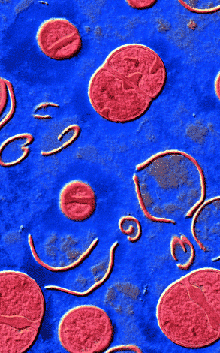AI spots antibiotics
 MIT researchers have identified a new class of antibiotics capable of killing superbugs.
MIT researchers have identified a new class of antibiotics capable of killing superbugs.
Methicillin-resistant Staphylococcus aureus (MRSA) is a drug-resistant bacterium responsible for over 10,000 deaths annually in the United States alone.
The discovery, achieved through AI deep learning techniques, marks a significant advance in the fight against antibiotic resistance.
The study, published in Nature, demonstrates the efficacy of these compounds against MRSA in both lab-grown cultures and mouse models.
Notably, these compounds exhibit low toxicity to human cells, making them strong candidates for drug development.
A critical innovation in this research is the ability of the deep learning model to provide insights into the chemical features that contribute to a compound’s antibiotic potency.
“The insight here was that we could see what was being learned by the models to make their predictions that certain molecules would make for good antibiotics,” said researcher James Collins, the Termeer Professor of Medical Engineering and Science at MIT.
“Our work provides a framework that is time-efficient, resource-efficient, and mechanistically insightful, from a chemical-structure standpoint, in ways that we haven’t had to date.”
The study is part of the Antibiotics-AI Project at MIT, led by Collins, aiming to discover new antibiotics against seven types of deadly bacteria within seven years.
Felix Wong, a postdoc at MIT, and Erica Zheng, a former Harvard Medical School graduate student, are the lead authors of the study.
MRSA, which infects more than 80,000 people annually in the United States, can cause severe skin infections, pneumonia, and sepsis.
Traditional methods of discovering antibiotics are time-consuming and often yield limited results, especially against drug-resistant strains like MRSA.
Over the past several years, Collins and his team at MIT’s Abdul Latif Jameel Clinic for Machine Learning in Health have employed deep learning to discover new antibiotics.
This approach has identified potential drugs against various drug-resistant bacteria, including Acinetobacter baumannii, commonly found in hospital settings.
Deep learning models can recognise chemical structures associated with antimicrobial activity, enabling the screening of millions of compounds for potential antibiotic properties.
However, the opaque nature of these models, often described as “black boxes”, limits understanding of their decision-making processes.
To address this, the researchers expanded their datasets, testing approximately 39,000 compounds for antibiotic activity against MRSA.
They trained the deep learning model with this data and chemical structure information. By integrating Monte Carlo tree search, a method used in AI systems like AlphaGo, they made the model’s predictions more transparent, identifying which substructures in the molecules were responsible for antimicrobial activity.
Further refinement involved training three additional deep learning models to predict toxicity to human cells.
This combined approach enabled the researchers to identify compounds that are both effective against MRSA and minimally toxic to humans.
The researchers screened about 12 million commercially available compounds, ultimately identifying promising candidates from five different chemical classes.
Two compounds from the same class showed potent activity against MRSA in lab tests and mouse models, reducing the MRSA population significantly.
The compounds appear to kill bacteria by disrupting their ability to maintain an electrochemical gradient across their cell membranes, a mechanism similar to that of halicin, an antibiotic discovered by Collins’ lab in 2020.
However, while halicin targets Gram-negative bacteria, these new compounds are effective against Gram-positive bacteria like MRSA.
The research findings have been shared with Phare Bio, a nonprofit co-founded by Collins, which plans to conduct further analysis on the chemical properties and potential clinical applications of these compounds.
Meanwhile, Collins’ lab continues to design additional drug candidates and search for compounds effective against other types of bacteria using their advanced deep learning models.
This collaborative study involved contributions from MIT, Harvard, the Broad Institute, Integrated Biosciences, the Wyss Institute for Biologically Inspired Engineering, and the Leibniz Institute of Polymer Research in Dresden, Germany.
The research received funding from multiple organisations, including the James S McDonnell Foundation, the US National Institute of Allergy and Infectious Diseases, and the Swiss National Science Foundation.








 Print
Print